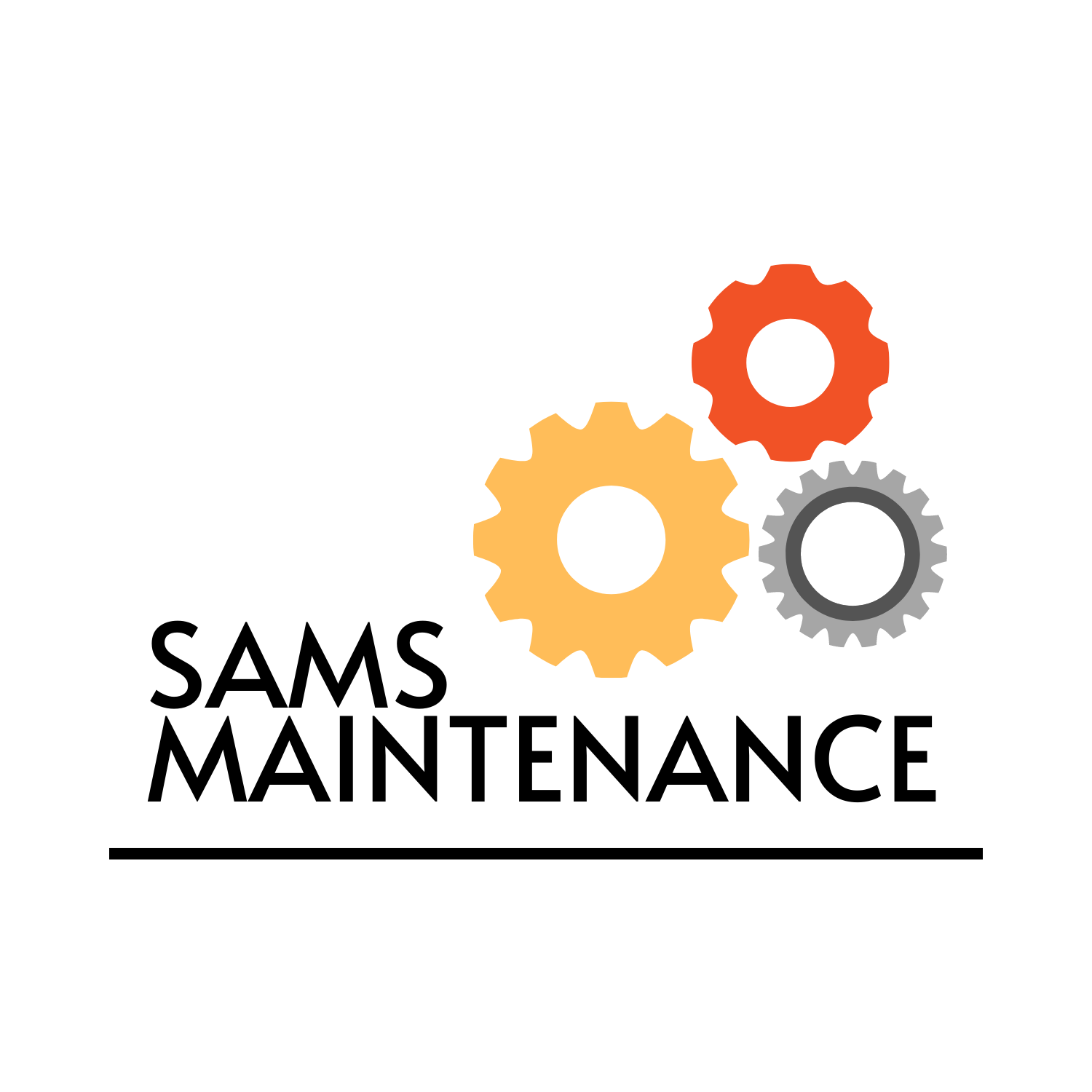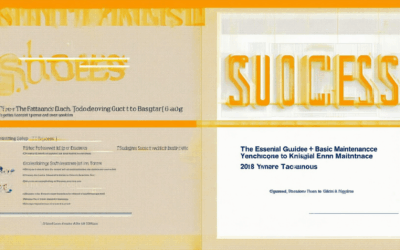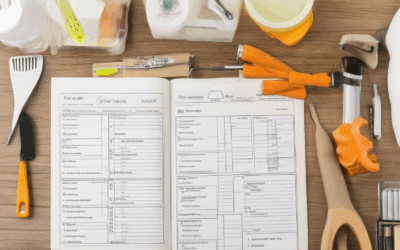Maintaining a home requires consistent care and attention to ensure it remains in excellent condition year-round. For homeowners, creating a structured annual home upkeep checklist can make a significant difference in preserving the value and functionality of your property. Whether it’s checking for plumbing issues, scheduling HVAC inspections, or organizing seasonal tasks, regular maintenance is essential for long-term sustainability. This comprehensive guide will walk you through the key areas to focus on, providing actionable tips and insights to help you create an effective checklist tailored to your needs. By addressing everything from general maintenance practices to specific areas like plumbing and HVAC, this article offers a detailed overview to help you prioritize and manage your home upkeep efficiently.
Key Takeaways
- Regularly inspect your home for potential hazards like loose floorboards, exposed wires, and damaged railings, ensuring smoke detectors and carbon monoxide alarms are functional.
- Maintain a thorough cleaning routine inside and outside your home to prevent dirt buildup and allergens.
- Apply the 1% rule for home maintenance to budget effectively and prepare for unexpected repairs.
- Prepare for each season by addressing specific tasks: clear gutters in spring, test air conditioning in summer, and protect pipes in winter.
- Schedule regular maintenance for HVAC systems, plumbing, and major appliances to prevent costly breakdowns.
- Invest in energy-efficient appliances and systems to save money and improve functionality.
- Enhance security with installed systems like security cameras and motion-activated lights.
- Establish a monthly maintenance routine for inside cleaning, yard work, and minor repairs.
- Inspect major systems like roofing, HVAC, and plumbing annually to prevent issues.
- Maintain landscaping through trimming, mowing, and pruning to boost curb appeal and property value.

What Home Maintenance Should Be Done Yearly?
Annual home maintenance is crucial to ensure your property remains in great shape and avoids costly repairs. Here’s a detailed checklist to guide you through essential tasks:
- Exterior Maintenance
- Inspect and clean gutters and downspouts to prevent clogs and water damage.
- Check for loose or peeling siding and repair as needed.
- Examine decks, patios, and walkways for structural issues or wear.
- Pressure wash exterior surfaces to remove dirt and grime.
- Inspect windows and doors for cracks or drafts.
- Interior Maintenance
- Clean and inspect walls for signs of peeling paint or water damage.
- Check floors for warping, cracking, or unevenness.
- Service chimneys and flues for cleanliness and proper function.
- Inspect ductwork for leaks or blockages.
- Clean and organize attics or crawl spaces.
- HVAC Systems
- Replace or clean air filters monthly, but at least annually.
- Test heating and cooling systems to ensure efficiency.
- Inspect venting ducts for obstructions.
- Check programmable thermostats for correct settings.
- Plumbing Systems
- Examine pipes for leaks or corrosion.
- Drain and flush water heaters to prevent sediment buildup.
- Check for leaks under sinks, tubs, and showers.
- Test water pressure and temperature for issues.
- Electrical Systems
- Inspect GFCI outlets and circuit breakers for functionality.
- Check for exposed wires or faulty connections.
- Test smoke detectors and carbon monoxide detectors.
- Safety Systems
- Test fire alarms and security systems.
- Inspect locks and deadbolts for proper functioning.
- Review emergency exit plans with family members.
- Landscaping
- Prune trees and shrubs to maintain growth patterns.
- Maintain sprinkler systems to ensure even watering.
- Check for invasive plants or pests.
- Appliance Checks
- Service major appliances like dishwashers, refrigerators, and ovens.
- Inspect garbage disposal for proper function.
- Check for worn-out belts or parts in appliances.
By completing these tasks annually, you’ll extend the life of your home and ensure it stays in excellent condition. For professional assistance with any of these maintenance tasks, visit our services page .
What Maintenance Is Required for a House?
A well-maintained house ensures longevity, safety, and comfort. Regular maintenance covers a variety of tasks that prevent issues before they arise. Here’s a comprehensive guide to keeping your house in top shape:
Seasonal Home Maintenance
Maintenance varies by season, so staying organized is key. Below is a breakdown of tasks based on the season:
- Spring: Check for damage to roofing materials, inspect gutters, and clean debris from outdoor systems.
- Summer: Test air conditioning units, inspect chimneys, and clean out rain gutters to prevent blockages.
- Fall: Clear leaves from roofs and gutters, check for signs of wear on siding, and prepare for colder weather.
- Winter: Insulate pipes, clear snow from walkways, and check for drafts around windows and doors.
Year-Round Home Maintenance Tasks
Regular checks and routine maintenance are essential:
- Exterior Maintenance: Paint peeling siding, replace broken shingles, and trim overgrown trees or bushes.
- Interior Maintenance: Vacuum moldings, dust surfaces, and sanitize bathrooms to prevent mildew growth.
- Appliance Care: Clean and service HVAC systems, test smoke detectors, and drain water heaters annually.
- Plumbing Checks: Look for leaks under sinks, around pipes, and behind appliances.
- Electrical Systems: Inspect outlets and switches for damage or tripping hazards.
Additional Tips for Homeowners
To enhance your maintenance routine:
- Monthly Checklists: Create a personalized schedule for tasks like changing air filters, pruning trees, and testing fire alarms.
- Professional Inspections: Hire experts for chimney sweeps, termite inspections, and septic tank evaluations.
- Emergency Preparedness: Keep a kit ready for plumbing, electrical, and HVAC emergencies.
By staying proactive with these maintenance tasks, you’ll extend your home’s lifespan and enjoy a safer, more comfortable living environment. Remember to consult trusted resources like this comprehensive guide for further details.

How to Maintain a Home Checklist
We understand the importance of staying organized and proactive when it comes to maintaining your home. Below is a comprehensive guide to help you create and maintain an effective home checklist.
Monthly Home Maintenance Checklist
- Monthly Checks: Schedule regular inspections for critical systems like HVAC, plumbing, and electrical components. Replace worn-out parts as needed.
- Cleaning Schedule: Develop a deep cleaning routine for high-traffic areas such as bathrooms, kitchens, and living spaces. Regularly sanitize surfaces and vacuum carpets.
- Safety Inspections: Test smoke detectors, carbon monoxide levels, and security systems to ensure they are functioning properly. Update passwords and codes as necessary.
- Seasonal Tasks: Depending on the season, address specific needs like gutter cleaning in fall or pool maintenance in summer.
- Minor Repairs: Fix small leaks, replace air filters, and touch up paint where needed. Plan for larger projects during off-peak seasons.
Creating a Personalized Checklist
- Identify specific areas needing attention, such as pet zones or storage spaces.
- Use checklists tailored to your family’s routines and lifestyle.
- Consider hiring professionals for tasks you may not be comfortable doing yourself.
Staying Organized
- Use digital tools or apps to track tasks and deadlines.
- Keep a central location for all important documents and manuals.
- Review and update your checklist annually or whenever major changes occur.
For more detailed guides and professional advice, visit our Home Maintenance Page . We provide actionable tips and resources to help you keep your home in top shape year-round.

General House Maintenance
General house maintenance refers to the routine tasks and activities required to keep a residential property in good condition. These tasks are essential for preserving the value of the home, ensuring safety, and preventing costly repairs. Below is a comprehensive guide to various aspects of house maintenance.
Key Components of House Maintenance
- Safety Checks: Regularly inspect for potential hazards such as loose floorboards, exposed wires, or damaged railings. Ensure smoke detectors and carbon monoxide alarms are functioning properly.
- Cleaning: Maintain cleanliness in all areas of the house, including bathrooms, kitchens, and living spaces. Dusting, vacuuming, and mopping floors regularly helps prevent dirt buildup and allergens.
- Rodent Control: Inspect for signs of pests like mice or rats and seal entry points to prevent infestations. Use traps or professional services as needed.
- Garbage Disposal: Clean and maintain the garbage disposal unit regularly to prevent clogs and odors. Run it periodically with hot water to flush out debris.
- Gardening and Landscaping: Trim trees and bushes, mow the lawn, and maintain flower beds to keep the exterior of the house looking neat and healthy.
- Asset Repairs: Address minor repairs immediately, such as fixing leaky pipes, replacing worn-out caulking, or repairing loose shingles on the roof.
Seasonal Maintenance Tips
Seasonal maintenance plays a crucial role in preserving your home’s integrity. Here are some tips tailored to different times of the year:
Spring Maintenance
- Check for damage caused by winter weather, such as cracked sidewalks or roof damage.
- Clean gutters and downspouts to ensure proper drainage during rainy seasons.
- Inspect windows and doors for cracks or drafts and seal them if necessary.
Summer Maintenance
- Test air conditioning units to ensure they are working efficiently before the hot weather arrives.
- Examine the foundation for cracks or shifts and repair as needed.
- Protect outdoor furniture and plants from extreme heat and pests.
Winter Maintenance
- Prepare pipes for freezing temperatures by insulating them or allowing water to flow gently to prevent bursting.
- Check for drafts around windows and doors and consider upgrading to more efficient models.
- Clear snow and ice from walkways and roofs to prevent slips and structural stress.
Monthly Maintenance Tasks
Establishing a monthly maintenance routine can help keep your home in great shape. Here are some tasks to include:
- Inside the Home: Vacuum and mop floors, clean bathrooms, and check for leaks under sinks or in bathtubs.
- Kitchen: Wipe down countertops, clean appliances, and check expiration dates on food items.
- Exterior: Power wash decks, fences, and siding to remove dirt and mildew. Inspect for peeling paint and repaint as needed.
- Yard: Mow the lawn, trim grass edges, and prune trees or shrubs that may have grown too large.
Long-Term Maintenance Planning
Planning ahead for major maintenance tasks can save you time and money in the long run. Consider the following:
- Roof Inspection: Have your roof inspected annually to check for missing shingles or damage caused by weather.
- HVAC System: Schedule regular tune-ups for your heating, ventilation, and air conditioning systems to ensure optimal performance.
- Plumbing Systems: Inspect pipes for leaks or corrosion and replace old fixtures to reduce water waste.
- Electrical Systems: Test circuit breakers and ensure all electrical outlets are functioning properly.
Energy Efficiency and Security
As part of your maintenance routine, consider upgrading to more energy-efficient appliances and systems. This not only saves money but also improves your home’s overall functionality. Additionally, install security systems or motion-activated lights to enhance your home’s safety.
Conclusion
Maintaining your house requires consistent effort and attention. By addressing small issues before they become major problems, you can extend the life of your home and ensure it remains a safe and comfortable place to live. Prioritize regular inspections, keep up with routine cleaning, and don’t hesitate to invest in professional services when necessary. A well-maintained home is not just a place to live—it’s an investment in your peace of mind and future.
The 1 Rule for Home Maintenance
When it comes to home maintenance, one essential rule to follow is the 1% rule . This rule helps you estimate how much money you should set aside annually for home maintenance. Here’s how it works:
- Assess the current value of your home.
- Calculate 1% of that value. For example, if your home is valued at $250,000, 1% amounts to $2,500 per year.
- Set aside this amount specifically for home maintenance expenses.
This rule is particularly useful because homes require ongoing care, and having a dedicated fund helps cover unexpected repairs and replacements without dipping into other budget categories. However, it’s important to also:
- Inspect regularly : Check for signs of wear, leaks, or pests at least twice a year to catch issues early.
- Plan for replacements : Replace major systems like roofing, HVAC, and plumbing when needed, even if they’re still functioning well, to prevent sudden breakdowns.
- Keep an emergency fund : In addition to your 1% rule, save some money for unexpected emergencies like appliance failures or natural disasters.
- Tackle projects promptly : Address maintenance tasks as they arise to avoid minor issues escalating into major problems.
- Consult professionals : For complex tasks, hire qualified contractors to ensure everything is done safely and correctly.
By combining the 1% rule with these supplementary strategies, you’ll be well-prepared to keep your home in great shape for years to come.

What Falls Under General Maintenance?
General maintenance encompasses a variety of routine tasks aimed at preserving the functionality, safety, and longevity of structures, systems, and equipment. Here’s a breakdown of key areas:
- Residential Property Maintenance:
- Exterior checks: Inspecting roofs, walls, and foundations for damage.
- Interior systems: Checking plumbing, electrical wiring, and HVAC units for proper function.
- Landscaping: Trimming trees, mowing lawns, and maintaining gardens.
- Vehicle Maintenance:
- Oil changes and filter replacements.
- Tire rotations and pressure checks.
- Fluid level inspections and topping off.
- Worn parts replacement (e.g., brakes, belts, hoses).
- Machinery and Equipment Maintenance:
- Regular inspections for wear and tear.
- Lubrication and cleaning of moving parts.
- Tightening loose components.
- Appliance Maintenance:
- HVAC systems: Cleaning vents and changing filters.
- Refrigerators: Defrosting and checking door seals.
- Dishwashers: Cleaning filters and ensuring proper drainage.
- General Property Maintenance:
- Building maintenance: Repainting walls and fixing structural issues.
- Plumbing: Addressing leaks and clogs.
- Safety measures: Testing fire extinguishers and sprinkler systems.
By addressing these areas regularly, individuals and organizations can prevent costly repairs, extend asset lifespans, and ensure safe, functional environments. Proper general maintenance is a cornerstone of responsible ownership and operational efficiency.




0 Comments